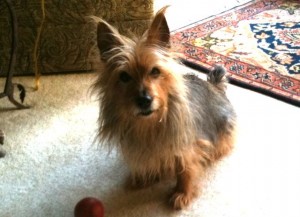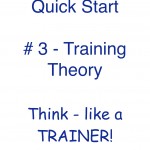 What are Markers?
What are Markers?
In order to communicate, it’s helpful to teach the animal a few phrases, actions or events that have specific meanings. I refer to these signals as markers.
Markers can be words, phrases, noises, sounds, hand signals, flashes of light, stomps on the floor, touches, odors or other stimuli the animal can sense.
Professional trainers teach and use multiple markers to give the animal constant feedback. Interrupt markers rarely affect the dog’s long term behaviors, but are useful when we want to interrupt a behavior for the moment.
Reward Markers
Some markers communicate praise and motivate the animal to perform the behavior again. I call these reward markers.
The timing of the marker is important. For best results, the trainer delivers the reward marker the instant the animal performs the desired behavior.
The reward marker tells the animal the instant in time that he or she has succeeded.
Verbal Reward Markers
Saying “Good boy”, the instant a dog sits, is an example of a primitive, reward marker. I refer to this as a primitive reward marker. Dogs hear the words “Good Boy” many times each day during normal conversations and, in these situations, “Good Boy” is not used to mark an instant of success.
Food Reward Markers
Using a food treat to tell the dog the instant he succeeds is a great method to communicate and to motivate.
When I pop a tasty food treat into Bentley’s mouth, the instant he sits, I am communicating to him about the correctness of his behavior. And, I am motivating him to sit more often, now and in the future.
The delivery of the food treat is both a marker for success and a reward which will motivate Bentley to sit more often.
Delivering a food treat for sitting is effective, but it is not a very accurate method to mark an instant of success.
By the time Bentley gets the treat for sitting he has licked his lips, tilted his head, looked up, and performed numerous behaviors.
How would Bentley know that the instant he touched his rump to the floor was the instant of success? He wouldn’t. That’s why this method usually requires several repetitions before the dog finally understands.
Food treats are excellent rewards but inefficient markers.
How can you mark the instant of success with food if your dog is not next to you, or your dog is not hungry, or you have no treats, or your dog is on a diet, or your dog is ill, or you want to increase a motion behavior such as jumping over a bar or running fast!
In those situations, using food as a marker for the instant of success is not practical.
Conditioned Reward Markers
If you wish to teach an animal very quickly you will need an instant reward marker that has been paired with the delivery of food.
Pairing the marker with food is called conditioning. The marker is called a secondary conditioned positive reinforcer or conditioned reward marker. A conditioned reward marker will elicit the same involuntary “oh goodie” brain chemistry responses as does a piece of food.
My favorite audible, conditioned reward markers are: the sound of a clicker; the words “good”, “kick” or “tic” (spoken sharply – like a sound), or the letter “X”.
If the dog is deaf, I might use a thumbs up signal, an exaggerated head nod, or an exaggerated blink of both eyes with a head nod, or the flash of a led light. If the dog is deaf and blind, I might use the vibration of an e-collar that is set on vibrate.
Conditioned reward markers:
- have been conditioned or paired with food and elicit the same involuntary “oh goodie” brain chemistry responses as does a piece of food
- are short and sharp, sounds or signals that are different from everyday sounds and signals
- provide the animal with immediate feedback
- are teaching tools used to communicate the instant of success
- can be discontinued once the animal learns the behavior
Using a conditioned reward marker will increase your significance to the animal!
From this point on, in this text, I’ll refer to a conditioned reward marker as “marker”. When you read the verb “mark”, it means to deliver the marker and follow it with some sort of reward that the animal desires.
Since the marker elicits an involuntary, desirable, physiological response, the animal will become aware of the behaviors that cause you to deliver the marker.
Your animal will choose to perform behaviors that make you deliver the marker. Now you have a willing student. Your animal wants to cooperate!
The conditioned marker becomes the actual reward. The animal will perform for the sound of the marker, and the marker will act as a reinforcer.
The goodies delivered after the marker maintain the “power” of the marker.
Conditioning a Reward Marker
The method to establish a conditioned reward marker is to use classical or pavlovian conditioning to pair (or associate) a marker with the primary reinforcer of food.
Regardless of the marker you choose, the steps for conditioning the marker are identical. You only need to condition the marker this one time. Your animal is not asked to perform a behavior during the conditioning process.
Do this when the animal is attending to you and not distracted. Do not speak or touch the animal before, or after, you deliver the marker and the treat.
Remember, a marker can be any signal the animal can perceive. My favorite audible, conditioned reward markers are: the sound of a clicker; the word “good”, and the letter “X”.
Here’s how to condition a reward marker.
You are not asking the animal to perform any behavior during this process.
In this example, I’ll use an audible marker, the letter X, spoken abruptly, like a sound
Speak a crisp “X”; give a food treat. Wait until the animal has finished eating the treat. Say “X”; give the animal a food treat. Repeat 3-5 times.
Using the Reward Marker
Once conditioned, you will deliver the reward marker the instant your pet does what you want. It marks the instant of success.
The marker is not used to interrupt or to get the animal’s attention. It is used to mark the instant of success!
The conditioned marker becomes the actual reward. The animal will perform for the sound of the marker, and the marker will act as a reinforcer. The goodies delivered after the marker maintain the “power” of the marker.
You’ll always deliver some sort of reward after the marker.
For example, you might follow the marker with food treats when teaching new behaviors or when working in distracting environments. A simple “thank you” or quick pat may follow the marker in less distracting situations.
With some animals, it’s better to follow the marker with a food treat 3-5 of every 10 times. It really depends on what the animal wants at that instant. If you have a ball crazy retriever, the toss of a ball might be better than any food treat.
The timing of the marker is very important, because it tells your dog the instant of success. The delivery of some sort of reward after the marker need not be immediate. You might mark an instant of success (with the marker) and then trot off with your dog to get a food treat out of your cabinet.
The reward marker serves two major functions. It tells the animal the instant of success and it motivates the animal to perform the behavior more often.
Once your pet knows the instant of success, and is motivated to perform, you may stop using the reward marker.
Even when I don’t use the reward marker, I always acknowledge cooperation with praise or touch or maybe even a food treat.
Reward System
What exactly do you have that your dog wants from you?
You own (and have complete control of) a few rewards that your dogs may want from you. These are food, attention and touch (F.A.T. T.. or FATT).
Understanding how to make your dog aware of the FAT and understanding how to manage the delivery (or removal) of FAT is the key to using a successful reward based training system.
Food
Food is food treats or a whole meal. I own and control the food. Bentley cannot receive food from me unless I choose to give him the food.
Attention
In this context, attention is any interaction that does not involve food or touch. Examples of attention are eye contact, verbal praise, walks, toss of a ball, car rides, et cetera.
I own and control my attention. Bentley cannot receive attention from me unless I choose to give it to him.
Touch
Touch is interacting with your dog via you hands. To social mammals, touch is very important and a sort of social bonding exercise.
We’ve all seen the apes or monkeys on Animal Planet. The lower ranking members often touch and groom the higher members. Grooming is performed by subordinates.
When you pet and touch your dog, the dog views it as a sort of grooming. In some ways, you are telling your dog that you are lower in rank and he or she is the king or queen. Yikes! Kings and queens do not often follow the demands of lower members.
Most normal dogs seek out touch by jumping up, nuzzling our elbows with their muzzles, moving next to us, et cetera.
For some very confident assertive dogs, this is a statement about controlling resources and the hierarchy of social status. For others it is not an attempt to establish ranking, but an indication of the need for normal social interaction. It depends on the individual dog and the context.
I own and control my hands. Bentley cannot receive touch from my hands unless I choose to deliver the touch to him.
Territory =Access to Natural Rewards
Natural rewards fill the internal and external environments. In some situations, we can control our dogs’ access to territory, thus indirectly control the available rewards.
Providing access to areas that contain or trigger natural, internal rewards is another consequence that you may (or may not) be able to control.
Bentley likes to chase squirrels and bark because he likes the rush of adrenaline that floods his brain. The adrenaline rushing through his brain is the reinforcer for ‘hunting squirrel behavior’.
Squirrels are in particular areas. When walking on lead, I can choose to move Bentley closer or nearer to the area containing squirrels.
I can release him and give him access to the areas that contain squirrels.
Bentley likes to smell mulch, because his olfactory senses are stimulated. The stimulation of his olfactory system is the actual reinforcer for ‘sniffing mulch behavior’. Mulch is in the environment.
I can choose to give Bentley access to the territory that contains the mulch.
Bentley likes to watch out the window and bark at passing trucks. The release of adrenaline that occurs when he barks out-of-control is the actual reinforcer for bark at truck behavior. I can choose to open or close the blinds.
Free FAT
When my father was growing up in north Mississippi, oranges were not readily available. To a 5-year-old child in that environment; oranges were considered more valuable than candy. When he received an orange or two for Christmas, he was excited and happy. He was very interested in where the oranges were grown and how they were delivered. He was aware of the oranges because oranges were a special treat.
In today’s world, oranges are usually available at any grocery store. Anyone who has the money can obtain an orange. For these people, oranges are not special treats. These people rarely think about how the oranges came to be and who delivers them.
No animal will spend energy to obtain something that he or she already owns. Rats don’t run through mazes to receive a piece of cheese if cheese is placed at the starting point.
Most dogs harvest our attention and touch anytime they want, regardless of their behaviors.
Most dogs already receive free FAT. It’s part of their environment from day one. Just as very young children have no idea that the air inside our homes is conditioned and this conditioning requires electricity, controls, equipment and money, dogs have no clue that we are delivering the FAT.
Sample Rewards for Dogs
Rewards are context specific and individual specific. One dog’s reward could be another dog’s stressor!
Use whatever your dog likes! Here’s some rewards I use with Bentley.
- Excited praise (attention)
- High pitched noise such as “bee bee bee bee) (attention)
- Toss of a ball, game of fetch (attention)
- Quick round of tug (attention)
- Rough play (tug-spin, chase, pinch flank, pull tail) (attention & touch)
- Walks on leash (attention)
- Opportunity to investigate / sniff items brought into the house (access to territory)
- Open back door (access to territory)
- Signal to perform a favorite command – i.e. Bentley loves to spin on command (attention)
- Command for “Tough Boy” (scratching ground with feet and paws while growling, barking)
- Release to sniff items on walks (access to territory)
- Opportunity to chase squirrels (access to territory)
- Soccer ball play (attention)
- Pat the dog (attention & touch)
- Brush or groom the dog (attention & touch)
Rewards Awareness Program
Before we can teach a dog via a reward system based on food, attention and touch (FAT), first, we must bring awareness to the FAT.
My Rewards Awareness Program is a slight adaptation of well known, popular protocols. For years programs such as “Nothing in Life is Free (NILIF)” by Dr. Victoria Voith have been discussed in the world of applied animal behavior.
Many of these programs are touted to be rank reduction, alpha or leadership programs.
Since people don’t compete with dogs for food, territory or reproduction rights, I believe the successes of the programs are rarely related to alpha concepts.
The Rewards Awareness Program is not only an awareness program for the animal, but an awareness program for people.
The program teaches people to examine and change their behaviors in order to modify their dogs’ behaviors.
Once people understand how their interactions influence their dogs’ behaviors, the stage is set for a cooperative partnership.
To begin this program, make the delivery of food, attention, touch, and access to territory, contingent upon your dog’s willingness to cooperate with you.
This means you should not leave food out all day for your dog to snack as he wishes. Remove your dog’s food bowl (with any left over food) after 10 minutes.
Once your dog realizes that the delivery of FAT is an immediate consequence of his or her behavior, your dog will examine his or her behaviors and try to perform behaviors which earn the good consequences.
When this occurs you’ll have the tools to motivate your dog to learn and perform. You will have a marvelous reward system in place!
Only deliver FAT (or anything else an untrained, soliciting dog wants at that instant) after he or she complies with any simple request, thus indicating a desire to cooperate.
The idea is to teach your dog that FAT is not free. Don’t allow him to demand and harvest your attention and touch without cooperating.
For example, if your dog jumps up on the couch uninvited, just stand up and walk a few feet away. Your dog will follow. Return to the couch and, before you sit, ask your dog to perform a simple behavior. Mark the instant of success, and invite your dog up on the couch.
Ask for cooperation before interactions take place. For example, ask your dog to sit or touch or spin or shake or down (or whatever), before you:
- Touch, pet or groom
- Attach the leash
- Adjust the collar
- Place the food bowl on the floor
- Invite him or her up on your furniture or lap
- Toss the ball
- Go for a walk
- Jump in or out of the car
- Open the back door
- Provide anything your pup desires
If your dog refuses to cooperate, do not repeat your command. Remove your attention. Turn your back, walk away or go out the door without your dog.
Re-engage in 5-10 seconds and ask again (assuming your dog knows how to perform the behavior you are requesting, assuming your dog is not distracted and assuming the environment is not too stimulating for him or her to perform the behavior).
Rewards Awareness Program Summary
Whenever your untrained dog is actively seeking an interaction with you, always ask for cooperation (a simple behavior) before you deliver any food, attention or touch.
The goal is to communicate to your dog that delivery of FAT is the immediate consequence of cooperative and desirable behaviors.
This Rewards Awareness Program has some exceptions. If your dog is voluntarily performing a desirable behavior (thus he is already cooperating), deliver the FAT without asking for additional behaviors. For example, if your dog is resting quietly on his bed, it’s okay to deliver FAT without asking for a simple behavior.
Once you have effectively communicated the concept of the program to your dog (in 3 -10 days), and your dog is volunteering polite behaviors, and your dog is not performing obnoxious behaviors, and you have started a training program – you have completed the Rewards Awareness Program. You can ease up on the rules.
If you notice that your dog is not cooperating, reenact the program.
Following this program will do as much (or more) to create a cooperative, senior-junior partnership between you and your dog as any other technique or suggestion.
How Much FAT?
If we deliver a piece of food, a quick touch and lots of praise for ‘half-way’ performing an already-learned command, we limit our abilities to hone and refine behaviors via the reward system.
Why would the dog try harder if he received a high level of FAT for a mediocre performance?
Deliver FAT at levels that are appropriate for the effort.
Dogs are not unlike people. We both tend to put out just the right amount of effort required to get our rewards.
For example, suppose a 6 year-old child is learning to print the alphabet. The very first time she writes the letter “A”, the lines are not straight. Even though the letter “A” is not perfect, the teacher praises her.
Six weeks later, the same crooked letter “A” does not prompt the same level of praise as the first attempt. For if so, the child will not be motivated to improve. In response to the crooked “A”, the teacher will kindly smile and say, “please try again”.
The teacher will ask for increasingly higher levels of neatness as the child’s skills develop.
We should always be aware of the level of FAT that we deliver and adjust the level to match the dog’s skills level and effort.
For instance, suppose I am teaching Bentley to sit on cue. The first time he sits, I make a big fuss and deliver a food treat, touch and praise.
Once he has practiced sit and knows sit, I will not deliver all three rewards when he sits on cue in a quiet environment. I might say, “Thank you” or deliver a smile. If the environment is very stimulating and Bentley sits on cue, I will deliver touch and praise. It depends on how difficult it is for him to sit in that situation.
If Bentley is slow to sit, I’ll just calmly say “thanks”, and then ask for a down, then a sit, then a down, then a sit. If he complies quickly with all the steps of the sequence, I’ll deliver touch and excited praise.
Although I’ll always acknowledge compliance with FAT, I rarely deliver high levels of FAT if I have to ask for a learned behavior (in a calm environment) more than once.
The point to remember is: our dogs will not give us high level performances if we pay them just as well for inferior performances.
As your dog’s skills grow, deliver FAT at high levels for only the best performances.
 Print This Post
Print This Post
Happy Training!
Alan J Turner, Companion Anial Behavior Counselor & Trainer – Canine Specialization
Private and Group Dog Training in Memphis, TN
Owner: How’s Bentley

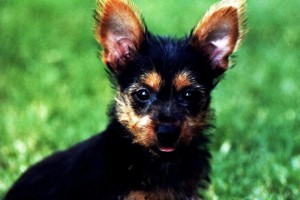

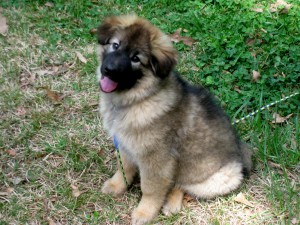
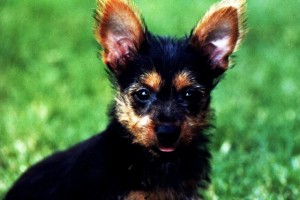
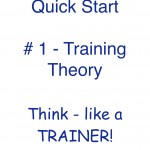 Steps to Success
Steps to Success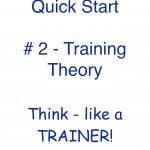 Animal Training
Animal Training What are Markers?
What are Markers?